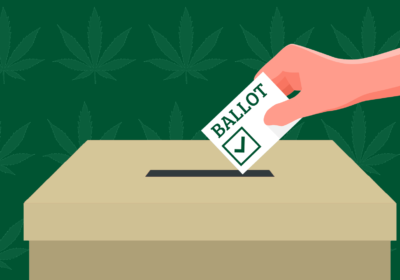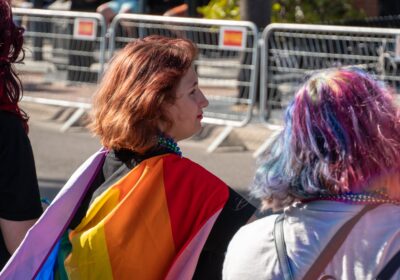Open mic discusses impact of suicide

The Survivors of Suicide event offered a platform for survivors along with others impacted by suicide and depression to share their stories. ORACLE PHOTO/ADAM MATHIEU
As the 10th leading cause of death in the U.S., depression is the cause of nearly 90 percent of adolescent mental health treatments, according to save.org. To shed light on the prevalence and danger of this issue on college campuses, three students arranged Monday night’s Survivors of Suicide event.
The event, which took place in the Marshall Student Center Amphitheater, served as a forum for survivors, as well as the family and friends of those who suffer from depression and suicidal thoughts.
The open mic-style platform was inspired by the International Survivors of Suicide Loss Day, an event sponsored by the American Foundation for Suicide Prevention, and allowed anybody to get up and share their story.
“I come from a semi-artsy background, so it just had to be an open mic — it had to be an art gallery, we just had to have coffee,” Center for Leadership and Civic Engagement (CLCE) Wellness and Disabilities Coordinator Tiffany Lin said. “And I thought it would be perfect because people just don’t talk about this stuff enough.”
One of the speakers, Mickey, worked for a few months as a responder at the National Suicide Prevention Lifeline. While he never thought about suicide, self-harm was a part of his life, and through the hotline he got to know over 60 people contemplating suicide.
He shared the story of a teenage boy he talked with on his first night who was dealing with financial problems, family problems, bullying and racism.
“I always think about what if I had said this or done that,” he said. “What if I wasn’t the person who answered the phone that night, what if someone else did — that person might still be alive.”
Amanda spoke about her brother and the effect his suicide had on her. She insisted people shouldn’t be afraid to talk about it — that she still wants to talk about him. She said there was more she could have done, and every single day it is hard to accept mistakes, ask for help, check in on friends and keep moving forward.
“I have two brothers, one of them is dead, and that’s okay, we can talk about it, we can talk about him. Because who he was isn’t defined by his choice to commit suicide and who you are doesn’t have to be defined by suicidal loss, who you lost, or how you’re feeling right now,” Amanda said.
“Because we’re more than that. We are so much and it doesn’t have to be that … it’s been more than two years and it still feels like yesterday I got the call that he’s not coming home, but I’m not afraid to talk about that.”
Another speaker, Ashley, shared her journey with depression and suicidal thoughts, which started around age 10. She said she used coping methods to fill a void she felt, namely because of boys her mother didn’t approve of. Ashley shared about useless counseling at 12, a close call at 15 and sharing nude photos with her boyfriend that her mother found.
“I felt more disappointed than ever,” she said. “My mother started screaming, so I ran to my room and I started pacing back and forth. And I’m crying and I don’t know what to do because she’s calling me all these names and I’m starting to believe it … so I went to the bathroom, looked at myself in the mirror, opened the medicine cabinet and I pulled out a bottle.”
Ashley took the whole bottle before her mother found her and got her to the hospital, where she stayed for three days. When she left, she send that it was bittersweet — bitter due to being alive when she didn’t want to, but sweet because she took surviving as a sign from God that she should be alive.
The Crisis Center of Tampa Bay had a booth at the event. Among the other preventative organizations present were Come Out of the Dark, CLCE, Life Worth Living at USF, Active Minds, To Write Love on Her Arms and Depression Army.
“We all came together as mental health organizations with the same fight to provide support for everybody who was here,” founder of A Life Worth Living Melanie Rosler said. “And to give students more to do besides just attending this event. Hearing about all these things is really nice in the moment … but after this, what do you do. This gives you the opportunity to go and be active in your school and in your community.”
Lin worked with Teresa Goff, president of Come Out of the Dark at USF, to start the event after discussing it at a Showcase of Service tabling event. They wanted to create an event that would open up communication about mental health. From there, they connected with Rosler to get more organizations involved.
To close out the event, participants were welcomed to take one of the biodegradable, yellow balloons that were taped along the edge of the amphitheater and write a message on it before releasing them into the sky.
“I Googled how most of these events went down — how do you honor a loved one you lost, and it was like balloon release. So, of course, why wouldn’t we?” Lin said. “It became sort of a theme or a logo on our flyers so we just had to have balloons. I thought it would be cute.”
They also set up a Take a Heart, Leave a Heart station where people could write a positive message on a heart, place it in a basket and take one that somebody else had written.
“I think it’s an issue that everyone thinks is really private, an issue that you only talk about with family or close friends,” Rosler said. “But having an event like this with a bunch of strangers kind of makes everything real, and makes it seem like this could turn into a community effort. This doesn’t have to be you alone.”






